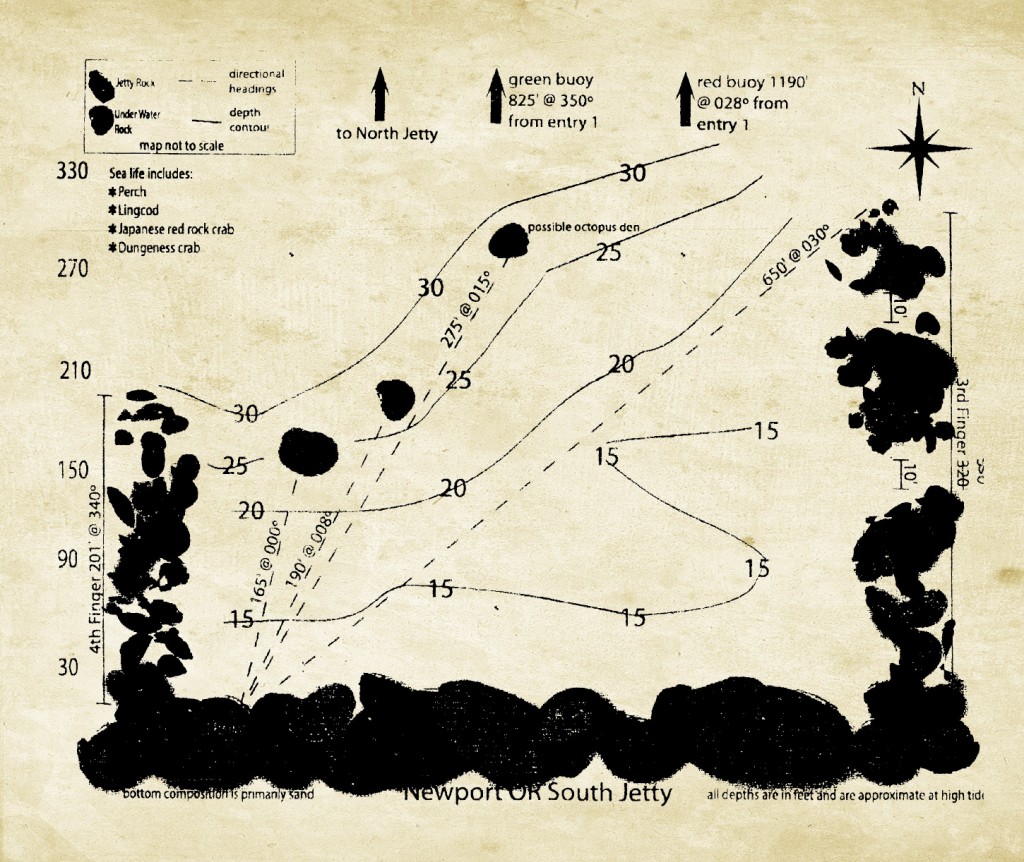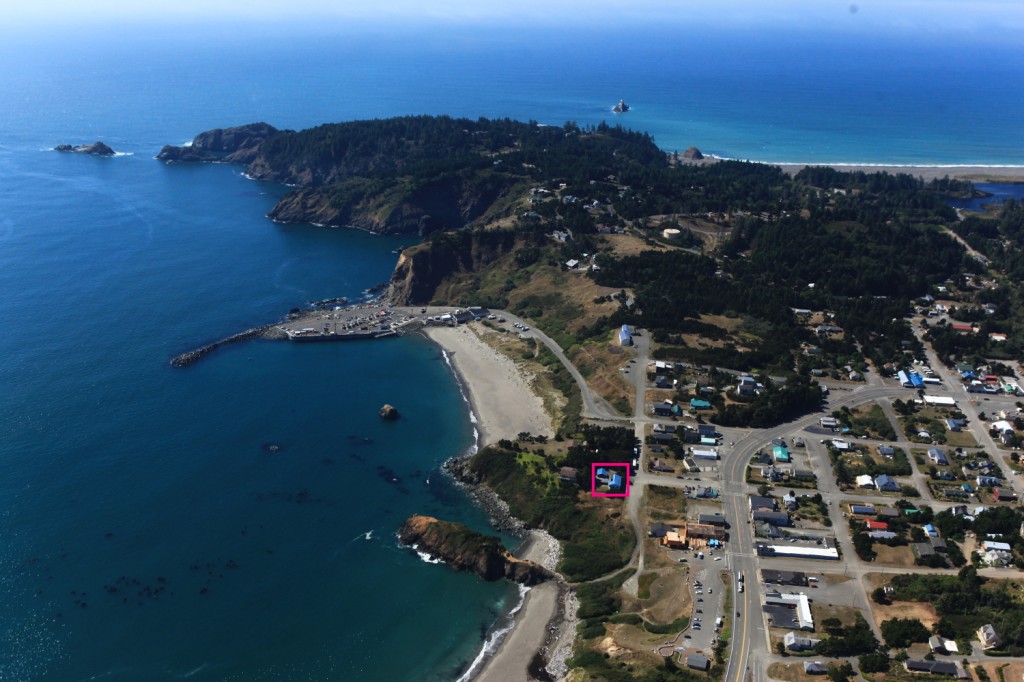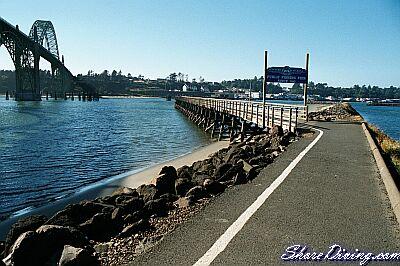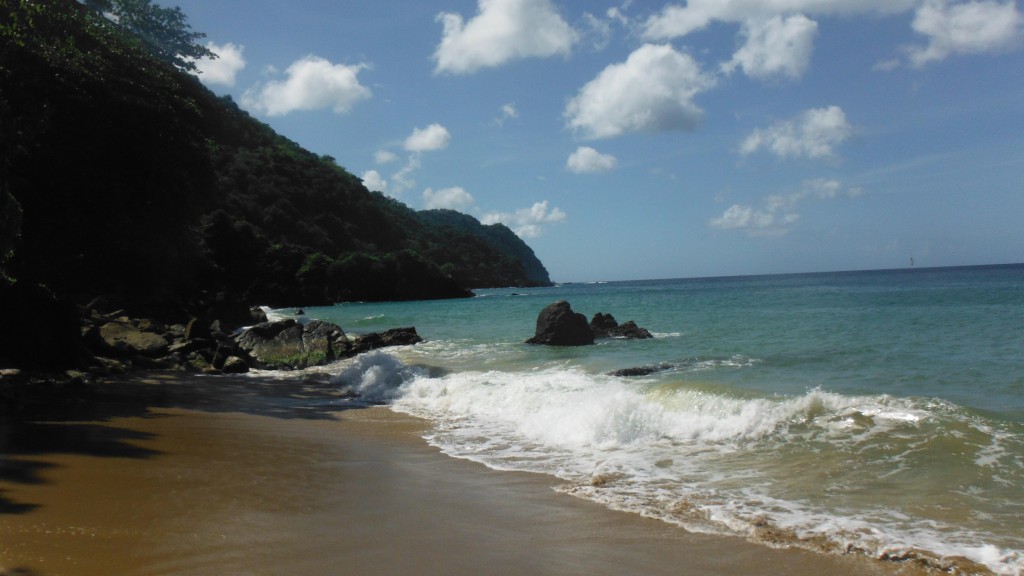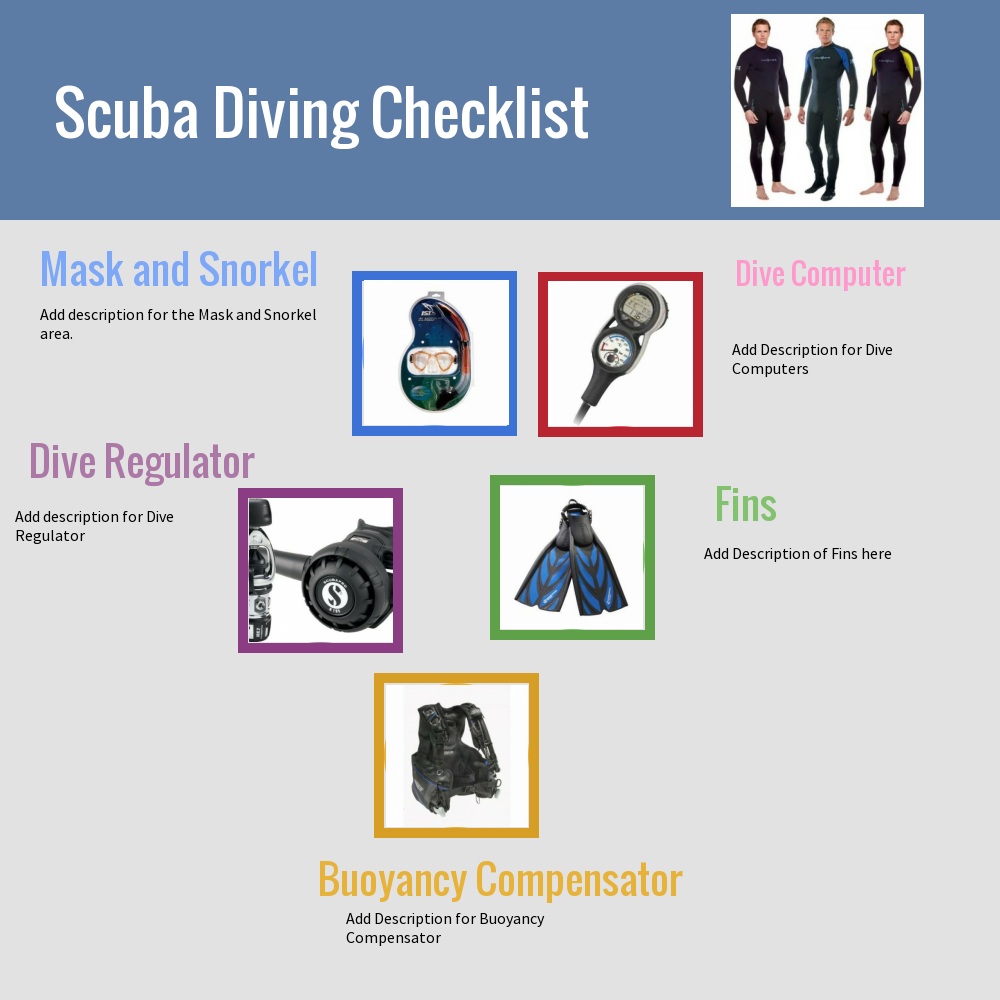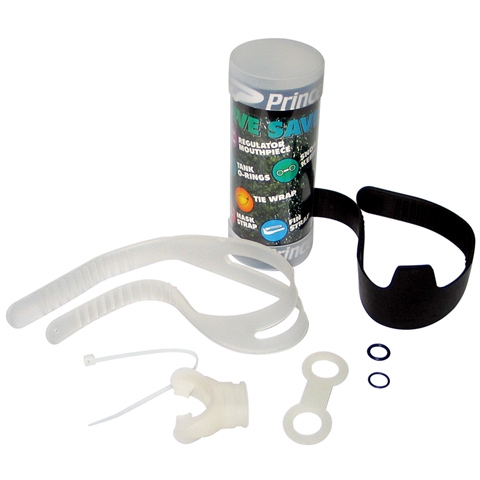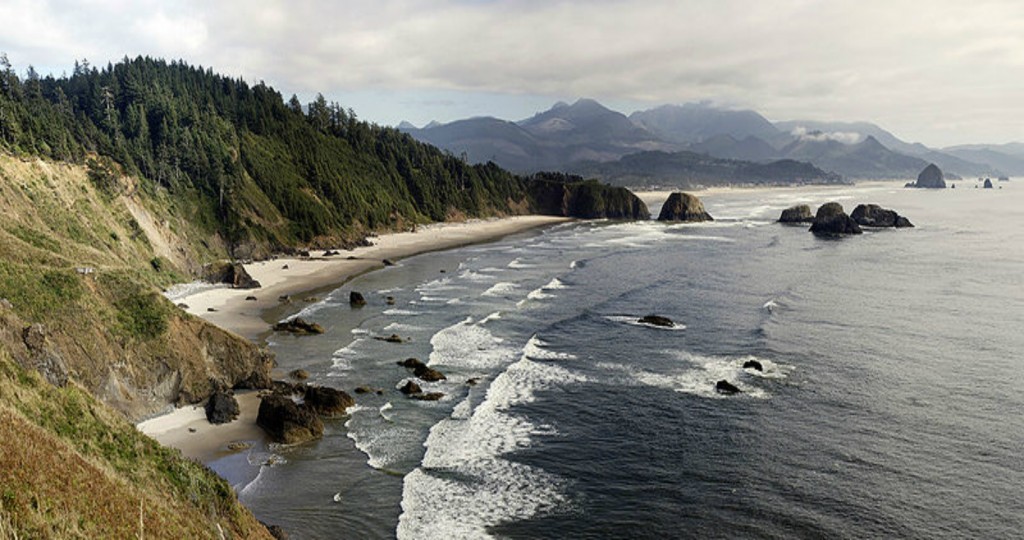

Diving the Oregon Coast, South Jetty in Florence Oregon can bring you a bounty of delicious Dungeness Crab for you troubles and if your lucky some Cockle clams also.
Finding Florence is a fairly easy trek, it’s located about an hour west from Eugene Oregon on highway 101, (101 runs the entire Oregon Coast to the California border.
To find the South jetty you head south on hwy 101, go through Florence and over the Bridge that connects Florence to the south coast. Proceed south until you see a sign for the South Jetty on your right, this is a state protected park so you will have to pay a day use area fee of $5.00.
Follow the road all the way to the Concrete Crab jetty (a large concrete platform that the public is allowed to drop crab pots and fish from.
Once your dive gear is on follow the left side of the rocks, you will be going along side of the left side of the jetty, crawl the rocks down to the water and take a compass heading to the rt side of the marker as you look out into the bay (the pole or marker is a navigation aid and there are a lot of large rocks that the fish and crab like to call home.
Fitness trainer business card with photo | Zazzle pct pills Juan Mata gives a fitness update in his weekly blog and reflects on last weeks games
Follow your compass heading until you come to the rock pile, there is an opening area that you can go through to access the other side of the rock pile (actually more of a long rock pile, could be 60 ft long and about 20 ft high, prime area for some crab and fish. the rocks are only about 10 ft from the surface of the water, and sometimes partially exposed.
After your Crab bag is full of crab and Cockles you can follow your compass back to shore, be sure and look for more Cockles on the way back.
This is a very easy dive for beginners and professionals alike, but remember to enter the water about 30 minutes before the tide switch, dive during the slack tide and you will have less current to deal with and have easier hunting for crab, you can dive this area on a low or high tide slack. If there is too much water exchange then you will want to enter the water sooner because the tides change faster during a large water exchange situation. (TIP: Always check you dive gear and complete you pre dive gear checklist prior to water entry.
Be sure to let me know what you think of this area and i’ll see you down under. Thanks and great diving. Greg. Let me know how your dive went in Florence at my Website & Blog 🙂

